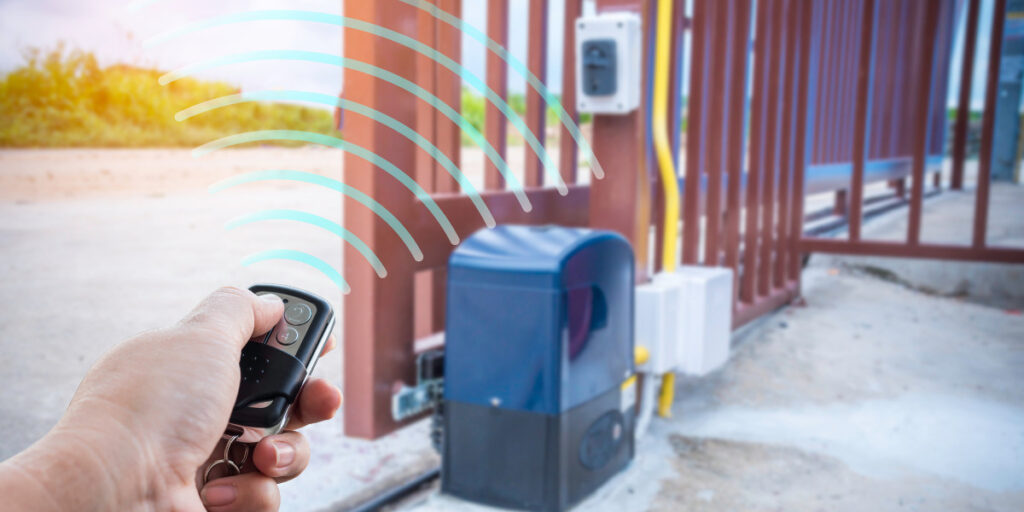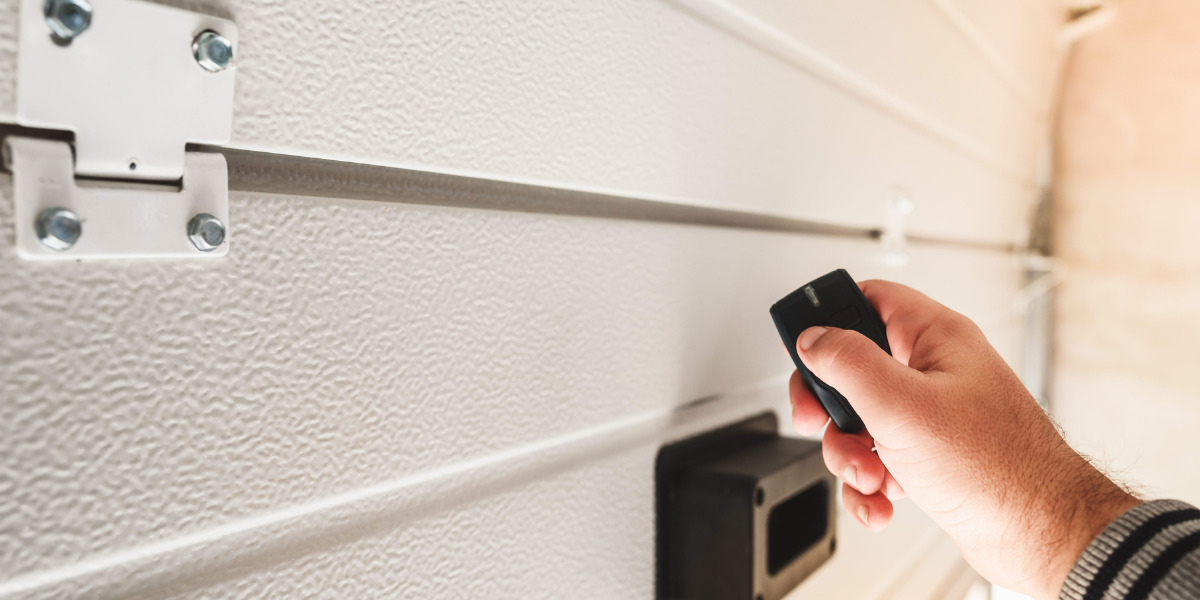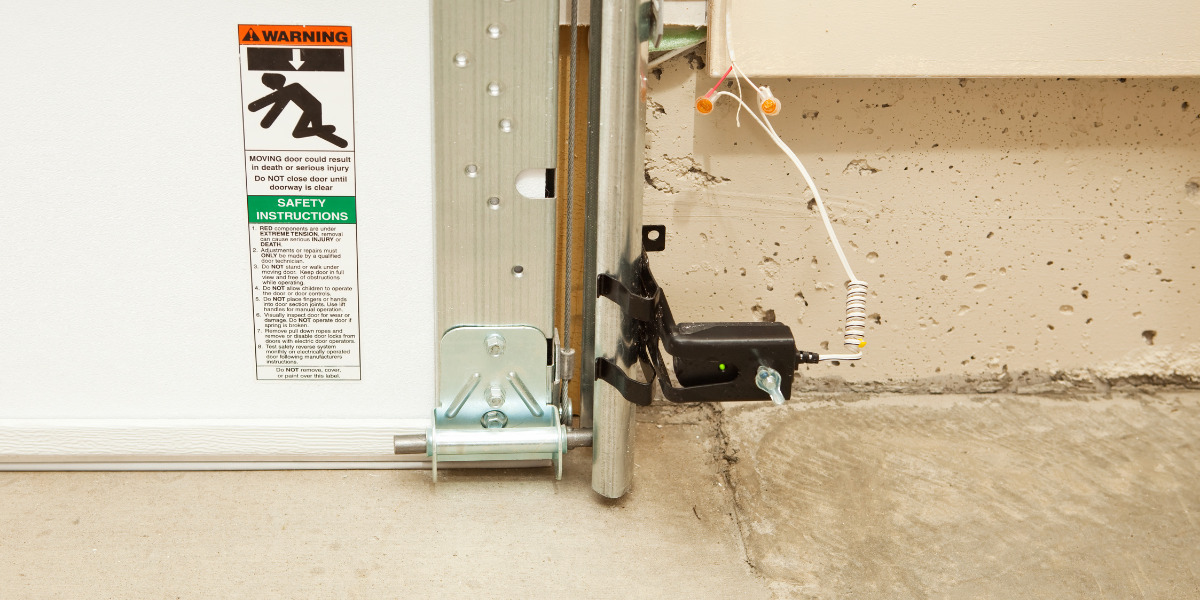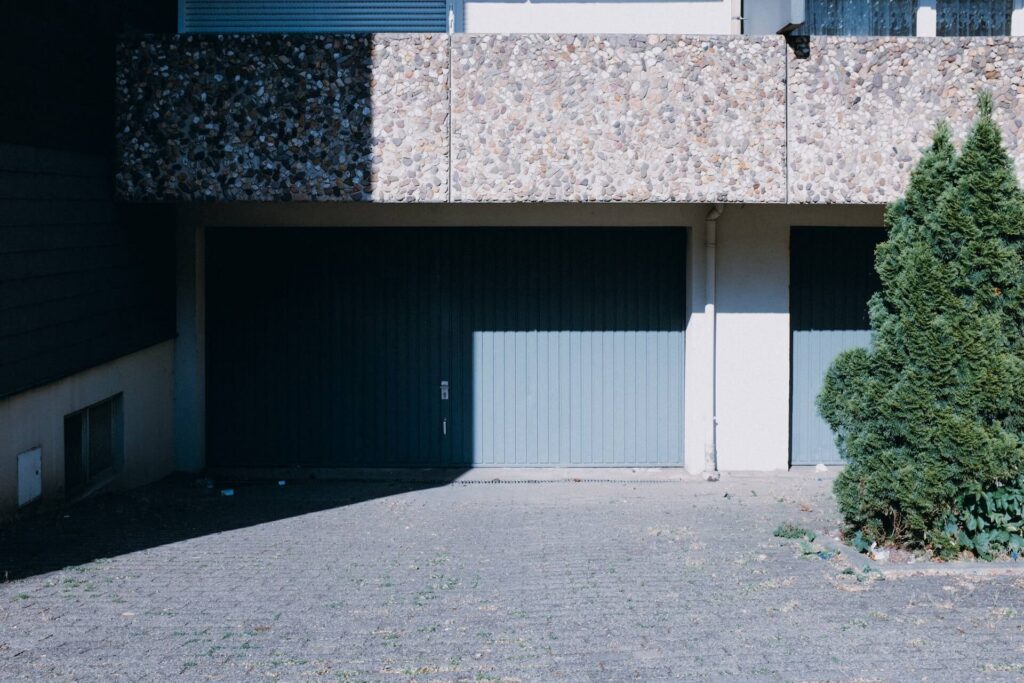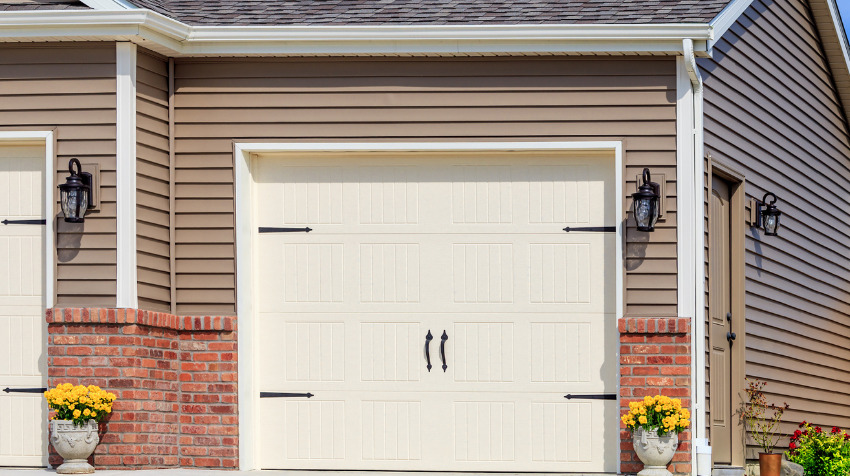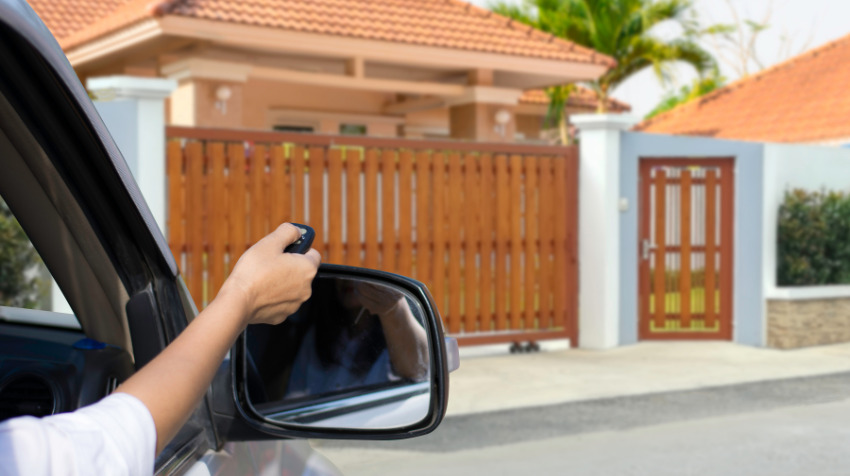How Sunlight Exposure Can Impact Garage Door Sensors: Essential Tips from Garage Door Repair Experts
Garage doors are an essential part of our homes, providing security and convenience. However, with their considerable size and weight, they can pose potential risks, especially if they lack proper safety mechanisms. This is where garage door safety sensors play a crucial role. These sensors are designed to detect obstacles or obstructions in the path of the closing door, preventing accidents and injuries. In this blog post, we will explore the importance of garage door safety sensors, the impact of sunlight exposure on their functionality, and the purpose of understanding the effects and solutions associated with this issue.
The main purpose of this blog post is to raise awareness about the importance of garage door safety sensors and to address the potential issue of sunlight exposure affecting their functionality. By understanding this problem, homeowners can take proactive measures to ensure their garage door remains a safe and secure component of their property.
The Role of Garage Door Sensors
Explaining the two types of sensors: photo-eye and pressure sensors
Garage door sensors play a crucial role in ensuring the safe and efficient operation of garage doors. They are designed to detect obstacles or obstructions in the path of the closing garage door, which helps prevent accidents and property damage. There are two primary types of garage door sensors:
- Photo-eye Sensors: Photo-eye sensors, also known as photoelectric sensors or safety sensors, consist of a transmitter and a receiver that are mounted on opposite sides of the garage door, near the floor. They work by emitting an invisible beam of infrared light between the two units. When the garage door is closing, this beam creates an invisible barrier across the door’s path. If anything, such as a person, pet, or object, interrupts the beam while the door is closing, the sensors send a signal to the garage door opener to immediately reverse the door’s movement and open it back up. This feature is critical for preventing accidents where someone or something might be caught under the closing door.
- Pressure Sensors: Pressure sensors, also called contact sensors or mechanical sensors, are placed at the bottom of the garage door’s path. They use pressure-sensitive pads or strips that activate when they come into contact with an obstruction. When the door encounters an obstacle and exerts pressure on the sensor, it triggers the garage door opener to reverse the door’s movement. Pressure sensors are effective in detecting obstructions that may not interrupt the photo-eye beam, such as soft or flexible objects like a cardboard box or a rolled-up mat.
Both types of sensors work in tandem to provide a comprehensive safety system for garage doors, ensuring that the door stops and reverses if there is anything blocking its path, thus preventing accidents and property damage.
How garage door sensors ensure safety for users and property
The inclusion of garage door sensors is a critical safety feature for garage doors and has undoubtedly saved countless lives and prevented numerous injuries and property damage over the years. Here’s how they ensure safety for users and property:
- Injury Prevention: The primary purpose of garage door sensors is to prevent the door from closing on people, pets, or objects. The photo-eye sensors and pressure sensors can quickly detect any obstruction and trigger an immediate reversal of the door’s movement, preventing injuries or even fatalities that could occur if someone were caught under a closing garage door.
- Property Protection: Garage door sensors not only safeguard individuals but also protect property from damage. For example, if a bicycle or a car is parked too close to the closing door, the sensors will detect it and prevent the door from colliding with the object, avoiding costly damage to both the door and the property.
- Increased Security: Modern garage door openers with sensors add an extra layer of security to homes. By ensuring that the door cannot close if there’s an obstruction, it becomes more difficult for potential intruders to force the door open.
- Peace of Mind: Knowing that garage door sensors are in place provides peace of mind to homeowners, knowing that the risk of accidents or damage is significantly reduced.
Understanding Sunlight Exposure Effects
How Direct Sunlight Affects Photo-eye Sensors:
Photo-eye sensors, also known as photocells or photoelectric sensors, are widely used in various industries and applications, including security systems, automatic doors, and industrial automation. These sensors work based on the principle of detecting changes in light intensity. When exposed to direct sunlight, several effects can impact the performance of photo-eye sensors:
- Saturation and False Triggers: Direct sunlight can flood the sensor with intense light, causing the sensor to saturate and lose sensitivity. This can lead to false triggers or a failure to detect objects accurately. When a sensor is saturated, it might indicate that an object is present continuously, even if there is no actual obstruction.
- Reduced Sensitivity: Direct sunlight can also cause a temporary decrease in the sensor’s sensitivity. This reduced sensitivity might make the sensor less responsive to objects that are within its operating range, leading to a decrease in detection reliability.
- Glare and Reflections: Sunlight can create glare or reflections on surfaces, especially on glossy or reflective materials. When the sensor’s beam path crosses these reflective surfaces, it may result in false detections or misalignment, affecting the sensor’s overall performance.
Potential Interference with Sensor Alignment and Communication:
- Misalignment: Sunlight exposure can cause physical misalignment of photo-eye sensors due to expansion or contraction of materials caused by temperature changes. This misalignment can lead to the sensor’s beam not hitting the receiver accurately, resulting in inaccurate detection or failure to detect objects.
- Wireless Communication Interference: In some advanced photo-eye sensors, wireless communication is used to relay data between the transmitter and receiver units. Sunlight exposure can interfere with wireless signals, leading to communication disruptions or delays. This can affect the real-time feedback and coordination between sensor components, impacting the overall system’s reliability.
Identifying Common Issues Caused by Sunlight Exposure:
- False Alarms: One of the most apparent issues resulting from sunlight exposure is false alarms. When direct sunlight interferes with the sensor’s detection capabilities, it may trigger false alarms, leading to unnecessary interventions or disruptions in automated processes.
- Reduced Detection Range: Sunlight exposure can temporarily reduce the sensor’s effective detection range. Objects that are beyond the reduced range may not be detected, potentially causing safety hazards or operational issues.
- Communication Failures: For photo-eye sensors that use wireless communication, direct sunlight can cause signal interference, leading to communication failures. Identifying communication issues can help differentiate between problems caused by sunlight exposure and other system malfunctions.
- Inconsistent Performance: Sunlight exposure effects can be intermittent, depending on the time of day and the angle of sunlight. As a result, the sensor’s performance might be inconsistent, making it challenging to pinpoint the root cause of the issues.
Signs of Sunlight-Related Sensor Problems
Garage door fails to close or reverses unexpectedly:
One of the most common signs of sunlight-related sensor problems with garage doors is when the door fails to close properly or reverses unexpectedly after attempting to close. Garage doors are equipped with safety sensors that use infrared technology to detect obstacles or obstructions in the door’s path. These sensors are typically located near the bottom of the door on either side, and they emit an invisible beam that, when interrupted, triggers the door to stop closing or reverse its direction to prevent accidents.
However, strong and direct sunlight can interfere with the operation of these sensors. When sunlight shines directly into the sensors, it may mimic an obstruction, causing the sensors to misinterpret the situation and stop the door from closing. Additionally, the sensors may be designed to automatically reverse the door’s movement if they detect a sudden change in the light pattern, which can also happen due to intense sunlight.
If you notice that your garage door refuses to close or keeps reversing without any apparent obstructions, it’s likely that the sunlight is affecting the sensors. To address this issue, you can try shading the sensors to reduce the direct sunlight exposure. This can be done by attaching shades or covers to the sensors or the area around them. Alternatively, adjusting the sensors’ angle slightly or repositioning them can also help mitigate the problem.
Sensor alignment errors and indicator lights:
Sunlight can also lead to sensor alignment errors in garage doors. When the sensors are not correctly aligned, they may not be able to communicate properly, which can result in malfunctioning door operation. This misalignment can happen due to various reasons, including accidental bumping, vibrations, or even direct exposure to harsh sunlight over time.
To check if the sensors are properly aligned, inspect both sides of the garage door’s opening and ensure that the sensors are facing each other directly. They should be at the same height and have an unobstructed line of sight. Some garage door systems have indicator lights on the sensors, which can provide valuable information about their alignment status. If you notice that the indicator lights are not lit or are showing an error signal, it indicates that there might be an alignment problem.
To correct sensor alignment errors, gently adjust the sensors until their indicators show they are properly aligned. This might involve slight adjustments to their mounting brackets or tightening screws. Always refer to your garage door’s user manual for specific instructions on aligning the sensors correctly.
Strange noises during garage door operation:
Another sign of sunlight-related sensor problems is the occurrence of strange or unusual noises when operating the garage door. As mentioned earlier, intense sunlight can interfere with the sensors, causing the door’s safety mechanism to activate unexpectedly. When this happens, the garage door might make odd noises, such as grinding, screeching, or clicking sounds, as it halts or reverses its movement.
These noises can be alarming and should not be ignored. If you experience unusual sounds while using your garage door, it is crucial to investigate the cause to prevent potential damage to the door or its components.
In conclusion, sunlight-related sensor problems in garage doors can manifest in various ways, such as the door failing to close or reversing unexpectedly, sensor alignment errors with indicator lights, and strange noises during garage door operation. Regularly inspecting and maintaining the sensors can help prevent these issues and ensure the safe and efficient operation of your garage door. If you encounter persistent problems or are unsure about how to address the issues, it’s advisable to seek the assistance of a professional garage door technician.
Regular Maintenance to Combat Sunlight Issues
Regular maintenance is essential to combat sunlight issues and ensure the proper functioning of sensors in various systems, such as solar panels, outdoor cameras, automatic doors, and more. Exposure to sunlight can lead to a range of problems over time, including sensor misalignment, reduced accuracy, and even complete failure. Implementing the following maintenance tasks can help address these issues effectively:
Cleaning Sensors and Removing Dust or Debris:
Regularly cleaning sensors is crucial to maintaining their optimal performance. Dust, dirt, and debris can accumulate on sensor surfaces, obstructing the detection capabilities and causing inaccurate readings. Cleaning should be done carefully to avoid damaging sensitive components.
For outdoor sensors, such as those in solar panels or security cameras, it’s essential to remove any bird droppings, pollen, leaves, or other debris that may accumulate on the sensor surfaces. Cleaning can be performed using a soft, lint-free cloth or compressed air to blow away loose particles gently. Avoid using harsh chemicals or abrasive materials that could scratch or corrode the sensors.
Checking Sensor Wiring and Connections:
Frequent exposure to sunlight, temperature fluctuations, and other environmental factors can cause wear and tear on sensor wiring and connections. Faulty or loose connections may lead to intermittent sensor failures or inaccurate data readings.
During regular maintenance, it’s important to inspect the sensor’s wiring and connectors thoroughly. Look for signs of fraying, damage, or corrosion. If any issues are detected, repair or replace the affected parts promptly. Ensuring secure connections will help maintain the sensor’s reliability and accuracy.
Lubricating Moving Parts to Prevent Sensor Misalignment:
Some sensors have moving parts that are prone to misalignment over time due to prolonged exposure to sunlight and environmental factors. Lubrication of these moving parts is crucial to reduce friction and prevent wear.
Before applying lubricant, it’s essential to check the manufacturer’s guidelines to identify the appropriate type of lubrication for the specific sensor. Over-lubrication can also be harmful, so following the recommended amount is crucial. Properly lubricating moving parts can extend the sensor’s lifespan and maintain its precision.
Regular maintenance not only helps combat sunlight-related issues but also contributes to the overall longevity and efficiency of the sensors. Keeping a maintenance schedule and documenting each maintenance activity can assist in identifying any trends or recurring problems, allowing for proactive measures to be taken. Additionally, having trained personnel or technicians carry out these maintenance tasks ensures that the sensors are handled with care and expertise.
Importance of Professional Inspection
Scheduling regular garage door maintenance with experts:
- Ensuring Safety: Garage doors are heavy and complex pieces of machinery that can pose significant safety risks if not properly maintained. By scheduling regular maintenance with experts, you can ensure that all safety features, such as auto-reverse mechanisms, are functioning correctly. This helps prevent accidents and injuries caused by malfunctioning garage doors.
- Extending Lifespan: A well-maintained garage door is likely to have a longer lifespan. Professional inspections can identify early signs of wear and tear, allowing for timely repairs and replacements of components, which in turn helps to extend the overall lifespan of the garage door.
- Cost-Effectiveness: Regular maintenance can save you money in the long run. Identifying and addressing minor issues early on prevents them from escalating into major problems that could be more expensive to fix. It also reduces the chances of sudden breakdowns that might require emergency repairs.
- Optimal Performance: Garage doors that receive regular professional inspections and maintenance are more likely to perform optimally. This means smoother and quieter operation, ensuring that the door opens and closes efficiently without unnecessary strain on the motor and other parts.
- Preventing Photocell Malfunction: The photocell sensors in a garage door system are responsible for detecting obstacles in the door’s path. Sunlight exposure can interfere with these sensors and lead to malfunctions, causing the door to close improperly or even reverse unexpectedly. Professional inspectors can identify such issues and make the necessary adjustments to ensure the sensors work correctly.
- Sunlight-Related Damage: Over time, prolonged exposure to sunlight can cause damage to certain components of the garage door, such as the seals and paint. A professional inspection can reveal signs of sun-related wear and tear, allowing for timely repairs or preventative measures to protect the door from further damage.
- Adjusting Sensitivity: Garage door openers have settings that determine how sensitive the door is to obstacles. Sunlight and its varying intensities can affect these settings, leading to inconsistent door performance. Professionals can calibrate the sensitivity settings appropriately, ensuring the door operates reliably under different lighting conditions.
Handling complex sensor problems and calibration by professionals:
- Technical Expertise: Garage door sensors are intricate devices that require specialized knowledge to troubleshoot and calibrate. Professional technicians are trained to understand the complexities of various sensor systems, making them better equipped to diagnose and address complex issues accurately.
- Avoiding Misalignment: Sensors need to be precisely aligned to work correctly. A misaligned sensor can lead to operational problems, such as the door not closing properly or reversing when it shouldn’t. Professionals have the tools and expertise to ensure the sensors are accurately aligned, avoiding potential complications.
- Calibration for Maximum Effectiveness: Calibration is a crucial aspect of sensor maintenance. Properly calibrated sensors will respond appropriately to obstacles, ensuring the door’s safety features work as intended. Professionals can fine-tune the calibration to achieve the best results, providing you with peace of mind regarding the safety and efficiency of your garage door system.
Additional Safety Tips and Best Practices
Importance of Professional Inspection:
Regular professional inspection of your garage door is crucial for several reasons:
- Safety: Garage doors are large and heavy objects that can pose significant safety risks if not properly maintained. Professional inspections ensure that all safety mechanisms, such as sensors, auto-reverse features, and emergency release systems, are functioning correctly.
- Preventive Maintenance: Professional inspections help identify potential issues before they become major problems. Detecting and fixing minor faults early can prevent costly repairs and extend the lifespan of your garage door.
- Smooth Operation: A well-maintained garage door operates smoothly and quietly. Professional inspections can identify worn-out parts, lubrication needs, and balance issues, ensuring your garage door functions optimally.
- Insurance and Warranty Compliance: Many insurance policies and warranties require regular maintenance and inspections. Failing to comply with these requirements might void coverage in case of accidents or damage.
- Resale Value: If you plan to sell your property in the future, having a well-maintained garage door with a documented inspection history can enhance the property’s resale value and appeal to potential buyers.
Educating family members about garage door safety:
- Safety Briefing: Ensure that all family members, including children, understand the basic safety rules when operating the garage door.
- Supervision: Children should not be allowed to operate the garage door without adult supervision.
- Remote Control: Keep the garage door remote control out of the reach of children to prevent unauthorized use.
- Emergency Release: Teach family members how to use the emergency release in case of power outages or malfunctions.
Testing sensors regularly to ensure proper functioning:
- Monthly Tests: Perform monthly tests on the garage door sensors to ensure they are working correctly.
- Simple Test: Place an object (like a cardboard box) in the path of the closing door. If the sensors are functioning correctly, the door should automatically reverse when it detects the obstruction.
- Clean Sensors: Keep the sensors clean and free from dust, dirt, or spider webs that could interfere with their operation.
- Sensor Alignment: Ensure the sensors are properly aligned to ensure their accuracy in detecting obstacles.
Remember, while these safety tips and best practices are important, they do not replace the need for professional inspections. Regular checks and maintenance, combined with professional assessments, will help ensure your garage door operates safely and smoothly.
Frequently Asked Questions
Can sunlight exposure affect my garage door sensors?
Yes, prolonged and direct sunlight exposure can potentially interfere with garage door sensors. Most modern sensors use infrared technology, and intense sunlight can create false signals, leading to malfunctions or temporary disruptions in their operation.
How does sunlight cause interference with garage door sensors?
Sunlight emits infrared radiation, similar to what the garage door sensors use to detect obstacles. When sunlight hits the sensor directly or reflects off surfaces, it can confuse the sensor and trigger false readings, making it believe there is an obstruction even when there isn’t.
What are the common issues caused by sunlight exposure to garage door sensors?
Sunlight exposure can lead to several issues, including false positives (door stops and reverses without an actual obstruction), false negatives (door doesn’t stop when there’s an obstruction), or erratic behavior where the sensor might work intermittently.
Can extreme temperatures due to sunlight damage the sensors?
Yes, prolonged exposure to extreme temperatures caused by direct sunlight can potentially damage the sensors over time. It’s essential to check the manufacturer’s guidelines regarding the operating temperature range and make sure the sensors are within those limits.
Regular maintenance is crucial for proper garage door sensor functionality. Inspect them at least every few months, especially after seasons with extreme sunlight exposure, to ensure they are working correctly.
Conclusion
In conclusion, prioritizing garage door safety is of utmost importance for every homeowner. Regular maintenance and inspection of the garage door sensors should be considered a top priority to ensure they function properly and reliably. Understanding the impact of sunlight exposure on sensor performance empowers homeowners to take necessary precautions.
Should any issues arise with the garage door sensors or if they seem to be malfunctioning, it is crucial to seek professional assistance promptly. Attempting DIY repairs on garage door systems can be hazardous and may lead to more severe problems if done incorrectly. Professional garage door technicians possess the expertise and knowledge to diagnose and address sensor issues effectively.
Ultimately, maintaining functional and properly functioning garage door sensors is a responsibility that all homeowners should take seriously. By doing so, they can create a safer environment for themselves, their families, and anyone who comes in contact with their garage door. Prioritizing safety over convenience is a small yet significant step that can make a tremendous difference in preventing accidents and ensuring peace of mind.

